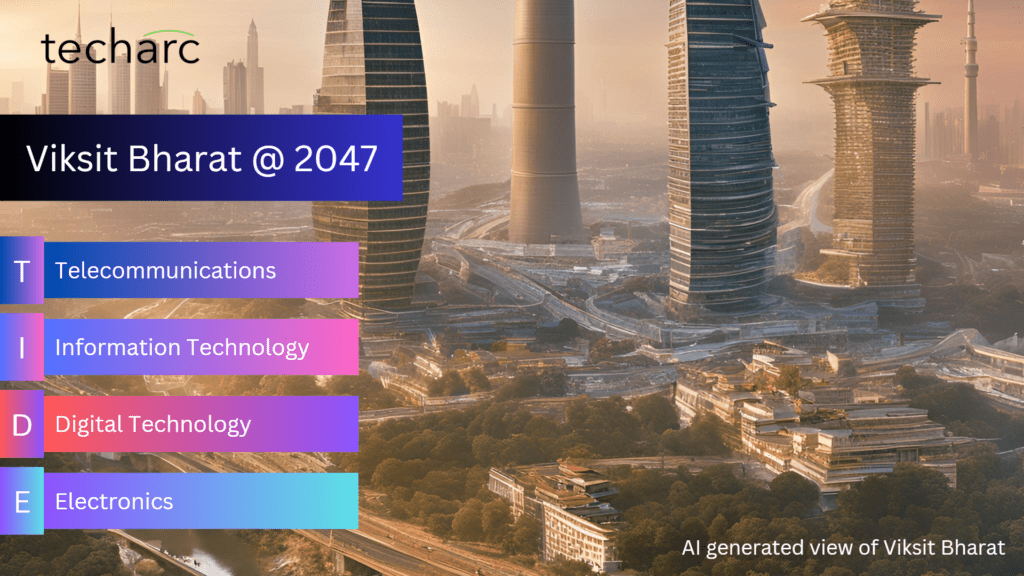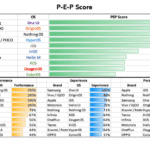The Viksit Bharat 2047 vision presented to the nation by Honourable Prime Minister should lead India to a digital independence or Swatantra where the next big tech brands are from India fulfilling the digital aspirations and needs of the 1.4 billion people.
As we celebrate the 78th Independence Day today the government has announced ‘Viksit Bharat’ or developed India as the theme. In his Independence Day speech, the Prime Minister emphasised the need of resolving this as a mission where every citizen puts in 24×7 for 2047 goal of India becoming a developed country.
Technology and development
There is no need to debate or emphasise the role that technology has to play in this vision of India @ 2047. In fact, technology is going to the vehicle that will drive this journey. We have to orchestrate the very powerful and potentially useful technologies under a holistic framework or approach so that they act as a force propelling the vision. There is a need to create a cohesive framework where we don’t see friction between any of the key pillars of technology.
If we look at the vast pool of technologies that are going to be pivotal in India’s journey towards Viksit Bharat by 2047, the diversity and demographic dividend of this great nation is such that every technology available has a role to play. The need is to stitch them in a framework right from the policy and regulatory summit to the lowest of the base in the technology value chain.
The ever-evolving technology value chain globally at the moment is structured in a way where value and benefits out of it will derive backwards starting from a use case of objective or goal. For instance, the basic goal of providing gigabit connectivity to each and every citizen of the country, which should be one of the many in what one can envision as Viksit Bharat, cannot be only achieved through cellular, or fibre, or satellite. The technology here becomes secondary, and the solution is driven by the goal or objective we are trying to achieve.
Similarly, when we envision SDGs in Indian context along with our own aspirations, be it driven by the government or desired by the citizens, we cannot link or attach it to a specific or a few technologies. We have to stitch many of them together. All the goals and objectives like holistic and inclusive healthcare and education, financial inclusion, world class infrastructure, improving standards of living, harmonisation of economic imbalances, creation of world class human capital opportunities, developing sustainable and environment friendly societies, and many more socio-economic agenda that will lead to a developed India, can be achieved only through a harmonised and collaborative efforts of all the technology building blocks available.
T-I-D-E framework

While technology is available on the wider global canvas, we as a nation still own a very small portion of the value chain. The fundamental technologies are still acquired and our dependence on global value chain is significantly high. Even in areas where we have relatively done far better, like smartphone manufacturing, out of 800+ components that go in any present day’s complex smartphone, our participation is negligible. In other products – hardware and software, the reliance on global supply chain is even higher.
So far, especially in the past decade, the focus has been on attracting global players to ‘Make in India’. The focus was rightly and strategically defined allowing us as a nation to leverage from what is already established by global technology ecosystem and we register our participation. Today, if we look at sectors like smartphones, automobiles and a few more, there is hardly any global brand cutting across the market structure defined by price or other determinants, which is not present and established in India. These global brands are not now only making for the domestic consumption but have also started leveraging the enabling policy regime and government facilitation to cater to global markets. India is now on the path of becoming an important exporter of products and services in technology sector. Yes, we cannot undermine the fact that our tryst with exporting skills through IT software and services had already started along with the opening up of economy and that brought India on the IT value chain of the world. But now we are continuously graduating registering our presence on the technology value chain.
What is also required in parallel to leveraging from technology while our journey towards Viksit Bharat by 2047 is on, that we develop our own brands in all the key pillars and elements of the holistic value chain. These brands should not be only marketing names, but have fundamental strengths proven by rigorous R&D and ecosystem development that leads to owning the platform, IP and the product. Its not that the journey has not begun. But it’s not calibrated and coordinated yet. That’s where a framework or an umbrella blueprint is required. Just like in schools we acquire various knowledge streams of mathematics, science, social sciences, languages, etc., for an overall knowledge skilling, we need to be champions in all key pillars of the technology value chain.
This is where, I propose TIDE framework. A framework that looks at the entire technology value chain through a single prism and proposes India developing champions in each one of them so that we have a greater and meaningful participation across the value chain.
At a broad level, we need telecommunications to develop connectivity of people, machines, infrastructure and societies. Now that cannot be done through any single technology or option available. It has to be a collaborative endeavour of cellular, fibre, wireless, fixed and satellite technologies. As a nation we have to outline how we are going to establish and increase our participation in all of these sub-ecosystems which are very massive, complex and intricate in themselves. Rather than getting entangled and lost in this complicated maze, we could be driven by a collaborative approach that is driven by a specific goal, objective or a use case.
Similarly, IT will add value by developing platforms and applications by orchestrating several technologies and layers that are available. Be it AI at the moment or Quantum computing in future, we need to develop our roadmap in a coordinated manner. It should not be a broken or discreet approach where our approach has been to look at various technologies as revolutionary milestones starting a new journey. It’s not that. It has to be an evolutionary ongoing process where every new technology is absorbed into what already exists to derive frictionless value for faster adoption and upgrades.
Digital has been one of the weak points for us. Be it a browser, search engine, advertising platform, App stores, social networks or several MarTech and AdTech technologies, we still heavily rely on global value chain. Yes, it’s not easy to create a digital ecosystem in an open market and economy where we cannot create artificial protectionist regimes to help local ecosystem grow. At the same time, the inherent beauty of technology value chain is that there is always scope for innovation. We have seen in other technology pillars how the global value chain and the indigenous value chain co-exists. Take example of office cloud applications. While Microsoft and Google serve most of the market, the growth of Zoho has been phenomenal at the same time. Perhaps, in digital we have not given enough of thoughts and easily given up thinking we can’t fight it out.
Lastly, for doing all this we need electronics. Right from gadgets to servers and storage in the data centres. From another view, a lot of electronics on the PCB real estate ranging from sophisticated semiconductors (processors) to several other components like resistors, capacitors, storage and what not. There is a lot to be made. Right now, we are only ‘scratching the surface’. We have to go deep and wide building the entire ecosystem.
Measuring the potential is no task to decide on this. Even a niche use case here goes into millions of users. At the same time a mass use case can run into billions of users. No country like India can give this rich and diverse market opportunity to address. Yes, there are challenges and it’s not easy to develop something for India due to several complexities that one needs to navigate through. But imagine, for this big opportunity one will have to otherwise deal with several countries elsewhere, meaning harmonising different regulatory requirements, conforming to divergent policies and not to talk of extremely different market dynamics. Here one can have huge scale in just one go. Agreed there are hues of market dynamics as we go to different regions of the country. But that’s an opportunity to innovate and R&D.
In recent times we have seen how fundamentally strong technology companies that have designed and developed use cases and own the IP and product, have not only been acknowledged and appreciated by the entire ecosystem, but they have good immense trust and love of consumers as well. Some of them have also gone public and done well on the market charts too. So, there is appreciation, recognition and growth from the entire ecosystem and stakeholders.
As we rejoice the independence in all walks of our life that was gifted to us by our elders who sacrificed their present for our future, it is our task now to put in our extra efforts and labour to usher India into technology independence so that the citizens of Viksit Bharat, our next generation proudly inherits a developed and happy living aided by technologies that are fundamentally designed, developed and made in India. Let us ride on the TIDE!






One response to “Technology Independence for Independent India. Let’s ride the TIDE!”
A thought provoking article. You have said it. We Indians need to work for own country first and make it a true “Viksit Bharat”.